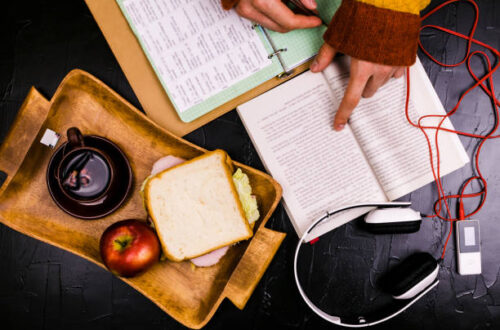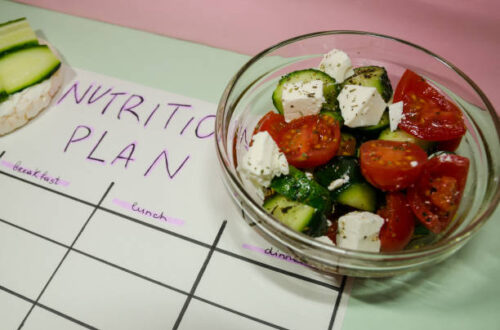In the demanding and often chaotic life of a male student, weight loss management can feel like an impossible task. With a busy schedule and tight budget, it’s easy to skip healthy eating. Fast food, sugary snacks, and late-night pizza make it tempting to stray from good choices. A strict diet can seem like a punishment. Also, many can’t afford a pricey gym membership or a fridge full of costly “health foods.”
However, a simple, affordable, and effective diet plan doesn’t require a personal chef or a fat wallet. The key is to make smart, sustainable choices that fit into your lifestyle and help you reach your weight loss goals. You don’t have to starve yourself or eat bland food. You can use cheap and easy-to-find ingredients to make tasty, filling, and low-calorie meals. These meals will help your academic and physical health.
This guide offers a simple and affordable diet plan for male students to lose weight. We’ll focus on practical solutions. These will use affordable, easy-to-find ingredients and require little cooking time. The plan is built on the foundation of a caloric deficit, which means you consume fewer calories than you burn. But we’ll do so in a way that keeps you full, energized, and satisfied, ensuring you can stick with it long enough to see real results.
The Core Principles of Weight Loss: Your Roadmap to Success
Contents
- 1 The Core Principles of Weight Loss: Your Roadmap to Success
- 2 A Sample 7-Day Meal Plan (Approx. 1800-2000 Calories a Day)
- 3 The Ultimate Grocery List for Students on a Budget
- 4 Practical Tips for Success: Making the Plan Work for You
- 5 Conclusion: Fueling Your Future, One Meal at a Time
- 6 FAQs About the Student Diet Plan
Before we dive into the meals, let’s understand the rules that make this plan work. By following these three principles, you can succeed without feeling deprived or overwhelmed. These aren’t just tips; they are the fundamental habits that will change the way you approach food.
1. Prioritize Protein and Fiber: Your Satiety Secret Weapon
If there’s one secret to a successful weight loss diet, it’s this: fill your plate with protein and fiber. These two nutrients are your best friends.
- Protein: It’s the king of nutrients for weight loss. Protein keeps you full for longer than fats or carbs, which means you’re less likely to feel hungry between meals. It also helps preserve your muscle mass as you lose weight, which is important for maintaining a strong and healthy metabolism. Think eggs, chicken, lentils, and Greek yogurt—all affordable, student-friendly options.
- Fiber: Fiber, found in vegetables, fruits, and whole grains, adds bulk to your meals without adding a lot of calories. It aids digestion and helps stabilize your blood sugar, preventing the energy spikes and crashes that lead to cravings for junk food.
By making protein and fiber the stars of your meals, you can eat until you’re satisfied and still lose weight.
2. Focus on “Volume Eating”: Feel Full on Fewer Calories
This principle is about being smart with your food choices to trick your body into feeling full. “Volume eating” means eating foods that are low in calories but high in volume, like vegetables and fruits. A massive salad with a lean protein source will fill you up much more than a small, calorie-dense sandwich, even if they have the same number of calories.
- Volume eating examples are a large bowl of oatmeal with berries, a pot of veggie-filled lentil soup, or a stir-fry loaded with broccoli and peppers. You get to eat a large plate of food and still stay within your calorie goals. This helps to prevent the feeling of being deprived that often causes people to quit a diet.
3. Meal Prep is Your Secret Weapon
Cooking in batches and prepping meals ahead can save you money and time. It also helps you avoid unhealthy, pricey takeout when you’re busy and hungry The busiest moments of your week are the most dangerous for your diet. With meal prep, you’ll have a healthy meal ready to go in minutes.
- How to Do It: Dedicate a couple of hours on a Sunday to cook a big batch of chicken, a pot of rice, and chop up some veggies. Portion everything into containers and you’ll have healthy lunches and dinners ready for the entire week.
A Sample 7-Day Meal Plan (Approx. 1800-2000 Calories a Day)
This meal plan is a template that you can easily adjust based on your personal calorie needs and food preferences. The recipes are simple and use ingredients you can find in any grocery store, making them perfect for a student on a budget.
Breakfast (Choose One Option Each Day)
The goal here is a quick, high-protein breakfast to start your day right and keep you full until lunch.
- Option A: Scrambled Eggs with Spinach (300-350 calories): Scramble 3 eggs with a handful of fresh spinach. Season with salt and pepper. This is a great source of protein to start your day.
- Option B: Oatmeal with Berries and Nuts (300-350 calories): Cook a half-cup of rolled oats with water or low-fat milk. Top with a half-cup of frozen berries and a tablespoon of nuts for healthy fats.
- Option C: Greek Yogurt with Honey (250-300 calories): Grab a single-serving container of plain Greek yogurt. Add a teaspoon of honey and some berries. This snack is quick, tasty, and full of protein.
Lunch (Batch-Cook on Sunday for the Week)
This is where meal prepping really pays off. Cook one of these meals in a large batch and portion it out for your lunches.
- Option A: Chicken and Veggie Bowl (450-500 calories): Cook a large batch of chicken breast or thighs. Serve a 4oz portion with a cup of steamed frozen broccoli and a cup of cooked brown rice or quinoa.
- Option B: Lentil Soup (400-450 calories): Make a big pot of lentil soup with carrots, celery, and onions. This is incredibly cheap and filling. Have a large bowl with a side of whole-grain toast.
- Option C: Tuna Salad on Whole-Grain Bread (400-450 calories): Mix a can of tuna (in water) with a tablespoon of Greek yogurt instead of mayo. Serve on two slices of whole-grain bread with lettuce and tomato.
Dinner (Mix and Match with Lunch Options or Try a New Recipe)
- Option A: Ground Turkey and Rice (500-550 calories): Brown a pound of lean ground turkey with chopped onions and bell peppers. Serve a portion with a cup of cooked rice and your favorite low-calorie salsa.
- Option B: Sheet Pan Chicken and Veggies (500-550 calories): Mix chicken thighs with diced potatoes, carrots, and broccoli. Drizzle with olive oil and add spices. Roast everything on a single pan for an easy meal with minimal cleanup.
- Option C: Black Bean Burrito Bowls (500-550 calories): Cook rice. Heat up a can of black beans with some spices like cumin and chili powder. Top with salsa, a little cheese, and some lettuce.
Snacks (Choose 1-2 a Day)
Snacks are important for keeping you full between meals and preventing hunger. Choose from these affordable, healthy options.
- Apple or Banana (100-150 calories): A classic, simple, and healthy snack.
- Handful of Almonds or Walnuts (150-200 calories): Great for a quick boost of energy and healthy fats.
- Greek Yogurt (150-200 calories): A single-serving container is a fantastic source of protein. Choose plain yogurt to avoid added sugars.
- Hard-Boiled Egg (70-80 calories): An easy and protein-packed snack to keep you full.
The Ultimate Grocery List for Students on a Budget
The key to a successful diet plan is a smart grocery list. By focusing on these affordable and versatile ingredients, you can build all the meals in this plan without overspending.
Protein Sources (The Foundation of Your Meals)
- Eggs: The most versatile and affordable protein source.
- Chicken Thighs/Breasts: Buy in bulk when on sale.
- Lean Ground Turkey: Cheaper than lean ground beef and very versatile.
- Canned Tuna/Salmon: Perfect for a quick, high-protein meal.
- Dried Lentils/Canned Beans: Extremely cheap and a great source of protein and fiber.
- Greek Yogurt (Plain): A great source of protein for breakfast and snacks.
Grains and Carbohydrates (Your Energy Fuel)
- Rolled Oats: Perfect for breakfast and can be bought in large containers.
- Brown Rice/Quinoa: Great for meal prepping.
- Whole-Grain Bread/Pasta: Provides more fiber than white bread.
- Potatoes: Cheap and filling, a great carb source for your sheet pan meals.
Fruits and Vegetables (For Fiber and Volume)
- Frozen Vegetables: Frozen broccoli, spinach, and mixed veggies are cheap, last forever, and are just as nutritious as fresh.
- Frozen Berries: Great for oatmeal and smoothies.
- Onions, Garlic, Carrots, Celery: The foundation of many recipes and very inexpensive.
- Apples, Bananas: Cheap, portable, and healthy snacks.
Healthy Fats and Other Essentials
- Olive Oil: A little goes a long way.
- Nuts (Almonds, Walnuts): A great snack. Buy in bulk for savings.
- Spices: Cumin, chili powder, paprika, salt, and pepper. A one-time purchase that will add flavor to countless meals.
- Salsa: A low-calorie way to add flavor to burrito bowls and ground turkey.
Practical Tips for Success: Making the Plan Work for You
Even the best plan can fail without the right habits. Here are some extra tips to help you stay on track and make this diet plan a success.
1. Hydrate, Hydrate, Hydrate
This is perhaps the simplest and most effective tip for weight loss. Drink plenty of water throughout the day. Often, we mistake thirst for hunger. Aim for 8-10 glasses of water a day.
2. Learn to Love Cooking (Even Simple Cooking)
You don’t need to be a gourmet chef. This plan focuses on simple, student-friendly cooking methods like roasting, stir-frying, and batch-cooking. Learning a few basic cooking skills will give you a sense of control over your diet and save you money for years to come.
3. Plan for Social Situations
Being a student means social outings, and your diet shouldn’t stop you from having a social life. If you know you’re going out for dinner with friends, plan for it. Eat a light, healthy meal beforehand to prevent overeating. Choose a healthier option at the restaurant, like a grilled chicken salad, and don’t be afraid to ask for a smaller portion.
4. Prioritize Sleep and Manage Stress
Both lack of sleep and high stress levels can increase cravings for unhealthy food and lead to weight gain. As a student, this can be tough. Still, aim for 7-9 hours of sleep. Also, try managing stress with a short walk or meditation. These simple steps can greatly help in your weight loss journey.
5. Don’t Be Too Hard on Yourself
You’re a student, and life happens. If you have a day where you end up getting fast food, don’t beat yourself up about it. One day of eating off-plan will not ruin your progress. The key is to get back on track with your next meal. Consistency is more important than perfection.
Conclusion: Fueling Your Future, One Meal at a Time
Being a male student can be tough, and the pressure to manage your time, money, and health is real. But as this guide shows, you can lose weight, eat healthy, and fuel your body for success without breaking the bank. Embrace key principles to take charge of your diet and finances. Focus on protein and fiber, eat more volume, and master meal prep.
Eating well is not just about your physical health; it’s about your mental health, energy levels, and academic performance. A well-fed brain is a focused brain. With this plan and these tips, you can fuel your body for success, reduce your stress, and make your student life a little bit easier and a lot healthier. The journey to a leaner, happier you starts with your next grocery trip.
FAQs About the Student Diet Plan
Q1: Is this plan healthy and safe for long-term weight loss?
A: Yes, this plan is designed to be a healthy and safe way to lose weight. It focuses on whole foods, lean protein, and plenty of fruits and vegetables, which are the cornerstones of a healthy diet. The caloric deficit is moderate, which is a sustainable and healthy way to lose weight over time.
Q2: How much weight can I expect to lose on this plan?
A: Weight loss varies from person to person, but a healthy and sustainable rate is typically 1-2 pounds per week. Consistency is key, so sticking to the plan and incorporating some physical activity will give you the best results.
Q3: What if I don’t like some of the foods on the plan?
A: This plan is a template, not a strict rulebook. Feel free to substitute foods you don’t like with others that have a similar nutritional profile. For example, if you don’t like chicken, you can use fish or tofu. If you hate broccoli, swap it for cauliflower or green beans. The key is to keep the principles of high protein, high fiber, and low calories in mind.
Q4: Can I drink alcohol on this diet plan?
A: Alcohol is full of empty calories and can hinder your weight loss efforts. It’s best to limit alcohol consumption as much as possible. If you do choose to drink, opt for low-calorie options like a shot of vodka with soda water instead of beer or sugary mixed drinks.
Q5: How can I manage hunger and cravings?
A: This plan is designed to minimize hunger and cravings by keeping you full with protein and fiber. However, if you do feel hungry, drink a large glass of water. If you are still hungry, grab a healthy, low-calorie snack like an apple or a handful of vegetables. For cravings, try to have a small piece of dark chocolate or a handful of berries instead of a whole bag of chips.





